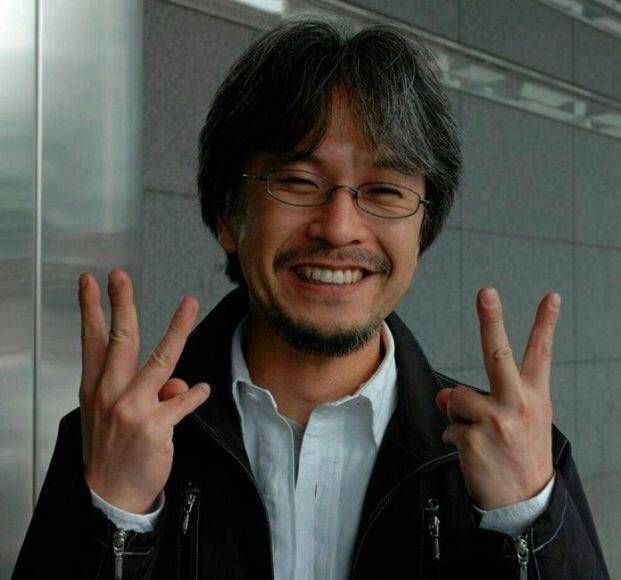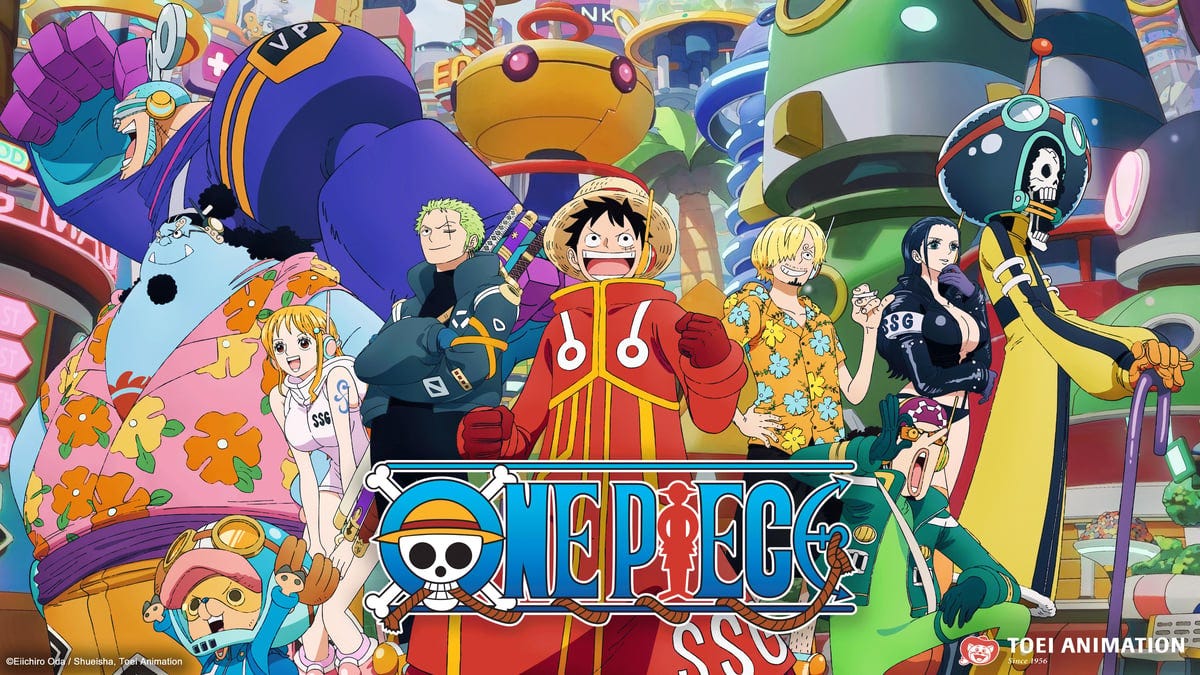Is One Piece a Once in a Lifetime Enigma?
How Eiichiro Oda's superhuman work ethic created a masterpiece.
I want you all to meet Eiichiro Oda. For anime/manga lovers, you may know him. For everyone else who may not, he is the writer of one of the most influential stories that ever hit Japan, and even the world: “One Piece”. Following his recent health complication, I wanted to dedicate this article towards him and his magnus opus.
Originally serialized in Shonen Jump’s magazine in 1997, One Piece has developed a massive world with rich lore, a massive community of memorable characters, and subsequently garnered fans from all corners of the world. Taking a simple premise of an aspiring young lad seeking the treasure of a notorious pirate, Oda created a series of remarkable stories surrounding Luffy and the Straw Hat pirates. Even sticking to the confines of this world, he has written in an astonishing variety of tales, involving humor, drama, and blood-pumping action.
But what makes One Piece so special? How has the anime surpassed 1000 episodes?
Vision
I’d like to first dive in to what I believe is the key reason behind the success of One Piece, and that is Oda’s drive and vision. The creator of One Piece is notorious for his rigorous work ethic, often sacrificing sleep, food, even relationships just so he could pump out the next chapter. While it isn’t foreign for artists to stay up long hours in the manga creation world, even Oda’s peers see him as a sort of “madman” for the lengths he goes for the sake of his baby.
This obsession was likely forged into him since he was a small child. Realizing a career could be made creating manga and cartoons, he carried this passion all the way through his adulthood. While he has had a variety of inspiration from an assortment of different manga, Dragonball was arguably the most influential in developing his career, which helped him forge his own unique art style. But more importantly, Dragonball helped him understand how big of an impact manga could have on the world. In an interview, he once commented about the influence of Dragonball in his school life:
“When Krillin died in Dragonball, the whole school was thrown in complete turmoil.”
World Building
Another element to Oda’s craft that makes One Piece the enigma it is could be resulted from his exposure to architecture. After graduating high school, he took on an architecture program in Kyushu Tokai University. Many of the set pieces and scenery played a massive role in developing the world of One Piece, with grandiose designs of Ennies Lobby, Marineford, Sabaody Park, and many others.
Character Designs and Backstories
Just like the diverse and expansive world Oda crafted, we can also accredit his impressive character designs. He’s not afraid of creating a wide assortment of characters with wildly different proportions. Somehow, he still manages to keep it consistent and believable in the world of One Piece. You have the tiny fairy like creatures called the Tontattas, introduced in the Whole Cake Island arc. Then you have these massive giants that are dozens, if not hundreds of feet tall! Even with the more average heights of men and women, you also have ones with wide shoulders and big bellies, while others have longer arms and misshaped heads.
Along with the wild variety of character designs, you have a big variety of character backgrounds as well, and all of them are equally tragic. Whether it would be Zoro losing his childhood friend, or Nico Robin having her entire home island destroyed by the navy, Oda has done a wonderous job writing unique backgrounds for each of his characters. Even temporary characters are blessed with an equal amount of treatment, like Señor Pink, introduced in Dressrosa.
Willing to Sacrifice
What are you willing to give to make your work succeed? Oda was willing to put almost everything on the line to make it as a successful mangaka.
He dropped out of university in a bold gambit for his dream profession. Japanese culture, however, is very critical thanks to their workaholic culture. School is seen as a right of passage, and someone willingly drop out of school is a big deal and may land you a lot of criticism. However, the accolades he accrued through the awards and contests emboldened his confidence.
He was also willing to face financial struggle as he was hired to be an assistant at Shonen Jump. It is no secret that many artists and writers in the manga industry struggle financial hardship. On top of the stress of high expectations, and still no guarantee of succeeding, the barrier of entry for aspiring manga artists is extreme. While his own ideas and ambitions were brushed off by his supervisors, he has learned a lot of various skills working and toiling for the company.
Sadly, all this hard work and effort has cost him a good deal of health. Trying to win the approval of his editors, working diligently to fix and learn form his mistakes, all while aiding other artists as part of his job, he sacrificed a great deal of sleep, only electing to sleep for 5 hours. Also, he elected to skip meals just so he could focus on his craft. These habits got worse when Oda’s manga was crowned on the top 3. His competitive spirit would bite him as he tried to outpace his rival manga’s, Naruto and Bleach. He would sacrifice his sleep even more, electing for not 5 …but 3 hours! He even slept at his desk so he could get right back to work. His deteriorating health forced him into the hospital. Yet, his indominable spirit remained, his stubbornness even pushed him to work even at his hospital bed. These same habits plague him to this day. Even most recently he was forced to take a break due to his health.
A Relentless Spirit and a Touch of Luck
As I mentioned in this article, Oda struggled getting the approval of his supervisors while working for Shonen Jump. Though his previous pitches were rejected, he eventually acquired a new boss, Nobuhiro Watsuki, a premiere manga artist who created Rurouni Kenshin. Because his new boss was more approachable, Oda had a fresh opportunity to pitch his idea. However, his ideas were still being rejected. With the newfound feedback and understanding he acquired by his new editor, he went back to the drawing board and completely revamp his style.
In a last ditch effort, he decided to throw his straw hat into the ring with his pirate themed story, originally called “Romance Dawn.” His editor, Mishimo, took a keen interest into this story and approved it for development. With an unexpected, and incredibly rare gap in Shonen Jump, this opportunity was the launch pad for Oda’s creation. This still was an uphill battle with the higher executives of the company, fearful of trying something new. He eventually conquered that hurdle, and in 1997, “Romance Dawn” was remade under the title we all know and love called “One Piece”!
With Oda, and the lengths he is willing to go for his creation, One Piece will arguably be a once in a lifetime enigma. Many of us on Substack, and many artists and writers all over the world want to make a grand hit as successful as One Piece. However, how many of us are willing to put in that same level of effort? Certainly not many (I sure as hell don’t want cut out 3-4 hours of my sleep schedule just to write, no matter how much I love it!) Heck, I even have a story idea heavily inspired by One Piece, though I know not to have that kind of hubris to believe I can make something that grandiose.
I implore you to watch this video talking about Eiichiro Oda’s past and his rise in the manga industry. He really is an inspiration.






Great write up! It seems obsession is a requirement for greatness. I don't know if I have it in me, but I keep thinking about how to leave a legacy through my writing. I'm sure you feel the same.
Dogged determination and perhaps delusional optimism is key.